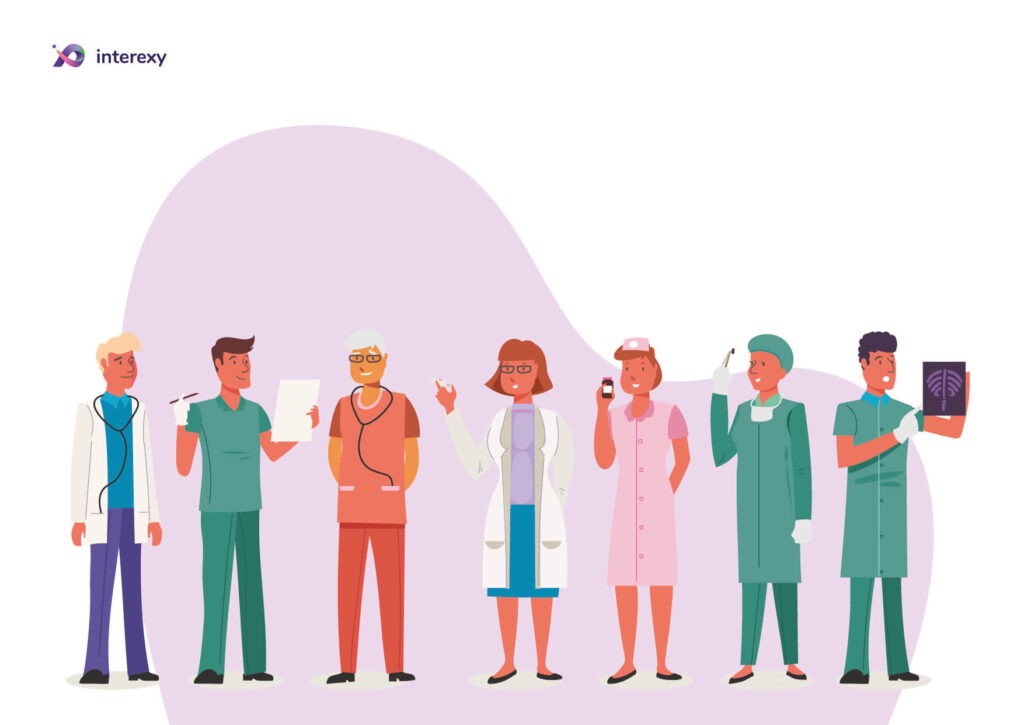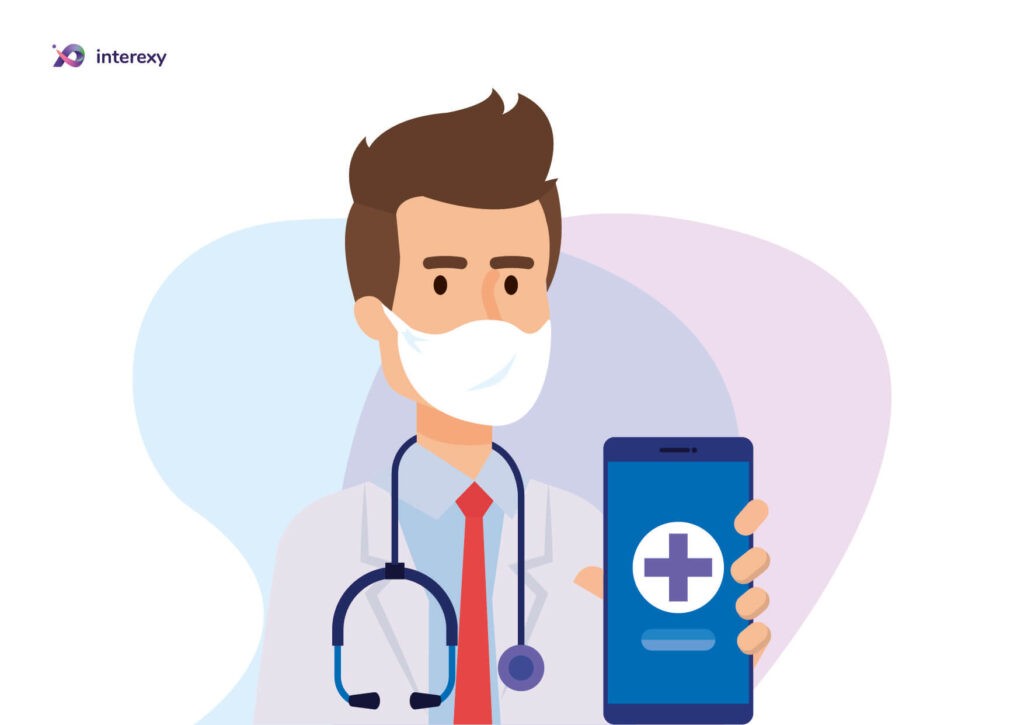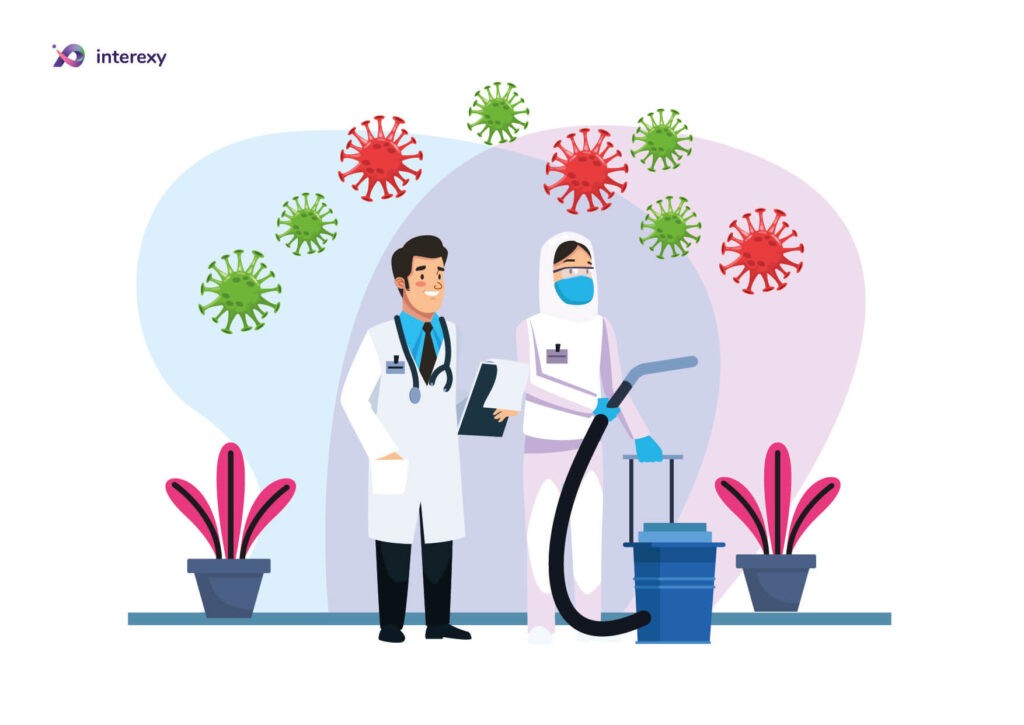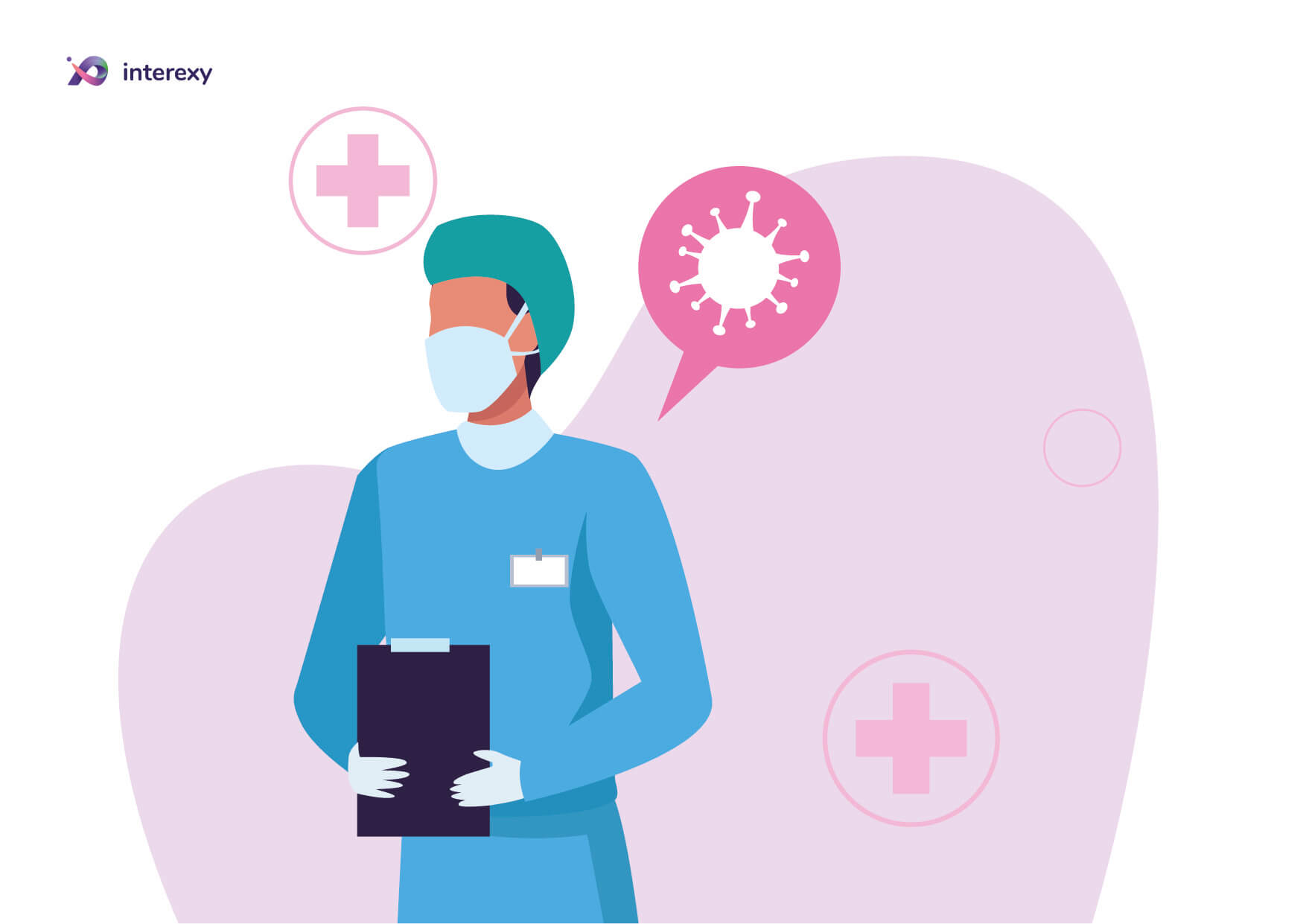September 2, 2021
In-Depth Guide to Building HIPAA Compliant Software in 8 Easy Steps
Any company that wants to build a hipaa compliant software that can store, process, or transmit protected health information (PHI) needs to comply with strict regulations. All data containing these identifiers are listed as PHI and fall under the guideline of HIPAA regulations. Enterprises, brands and health organisations that want to enter this industry are required to comply with strict regulations since failure to follow the rules correctly can lead to very unforgiving consequences.
Today, software solutions have to become a more central part of the new businesses in the healthcare space. Since this is a well-thought-out industry that ensures the protection of user’s data, both web and mobile products that give access to patient data or configure and control the wellness management settings are essential elements of care delivery applications. So how can you make sure that your application is compliant with HIPAA? Understanding what it means, how HIPAA works and features that you should consider are crucial steps in determining whether a business sinks or swims in the new digital reality. And if you are not sure about doing it on your own, contact our niche-down experts to develop a quality application that will comply with strict industry’s rules.
So What Is HIPAA and Why Is It Important?
Patient’s data is the most critical data in the healthcare industry. Since the user’s health records contain entire medical history, tests and scans results, as well as details of current health insurance, this is personally identifiable information that should be strictly protected. This is where the Health Insurance Portability and Accountability Act (HIPAA) enters the market and protects each patient’s medical privacy.
Hipaa in healthcare refers to the law that has been designed to solve two primary issues at once. Firstly, healthcare organisations need to share data, which is now often done electronically. Secondly, patients are worried about having safeguarded health data, as they want their information to be fully protected. Also, they want to have an opportunity to share their information with another provider quickly and without any issues.
According to a survey reported by Statista, in April 2019, only 16 per cent of US respondents revealed knowing the basics of the standards required for the healthcare industry. However, over 46 per cent of people declined that they know the basics about HIPAA. This is because this guideline is strictly followed and can cause numerous problems for companies creating a hipaa compliant software but not following each rule. Only in 2020, there were 642 data breaches reported within the market, with a 25% year-over-year increase.
Health records are usually under attack by hackers who want to create false identities, commit insurance fraud, or illegally obtain medicine. With the increase of cyberattacks, if data breach and non-compliance happens, a healthcare organisation sustains a great loss from fines. The amounts of fines vary according to violation but are often in the range of between $100 and $ 50’000.
According to the US Department of Health & Human Services (HHS), Healthcare organisations, doctors, companies that provide software for this industry are all Covered Entities. Therefore, everyone on this list needs to be HIPAA compliant.
What to consider when building software that is hipaa compliant
When thinking about making a hipaa compliant software, it is vital to consider critical features vital for the healthcare industry. Below we listed all the necessary elements for HIPAA-compliant software collected from the safeguards listed in the HIPAA Security Rule.
Admin Access Control
Hipaa compliant software development should start with offering admin access control. Only the admin has an opportunity to authorise the access of the app to the customers. While the user is authorising, all roles, responsibilities, and limitations are also assigned at the foundation stage.
User authorisation
The second feature of building hipaa compliant software is to think about user authorisation. It is crucial to integrate proper password and identity verification into the software for user authorisation. In addition, you have to make sure HIPAA training and staff member attestation of strict policies are listed before authorising access to the product.
Data Backup
When developing hipaa compliant software, you have to minimise the data that you present, access and store. You should remember that you do not collect any information unless it is required. For example, there is no need for a date of birth from every user. One of the top keys to reducing the breach risk is not to store data that is highly sensitive.
Automatic Log Off
The hipaa compliant software should always go with an option to log off the user after some time of inactivity. For example, if the patient has not performed any activity within 5 minutes, the app has to be automatically logged out.
Data Encryption
The protection of the private health information of every patient highly depends on the whole security of your chosen network. All the data that you store, process, or transits should follow strict security requirements and be encrypted using tools and encryption hipaa protocols.
Step-by-step guide on developing hipaa compliant software
From our experience, when software is designed from scratch, integrating security software practices will be much easier than when it comes to legacy implementation. The transition to HIPAA criteria requires a more deep analysis as there are many pitfalls developers may face.
The common objective is to deliver well-thought-out HIPAA compliant applications with minimum bags to avoid any outbreaks that may occur. Implementation is primarily focused on every process associated with how a company develops and deploys software and its related limitations.
Below we listed the main steps when building software that is hipaa compliant.
Hire an expert
It is challenging to meet all HIPAA requirements without guidance and enough experience with such software solutions. This is why it is always a great decision to hire a third-party professional or a company with relevant background to consult and audit your application. Also, you still have an option to outsource the whole HIPAA app development to an experienced team that will produce a product fully compliant with all requirements.

Evaluate patient data
The second stage of building mHealth apps is to ensure the data from patients you collect is really necessary and figure out what information could be categorised as PHI. Once it is done, take a time to learn what PHI data you may avoid storing or transferring through your app to prevent breaches.
Explore changes in HIPAA
Since HIPAA regulations continue to evolve within new rules, investors and companies should be kept up with all minor changes in the safety guidelines.
When hiring a team, you should learn how the vendor monitors changes in HIPAA regulations. Does it have a precise plan for staying updated on changes in the law? Strive to get concrete examples. Maybe a company has an in-house lawyer who monitors changes in the industry’s regulations? Check this out before going to the development stage.

Find HIPAA compliant third-party solutions
Since building HIPAA compliance for software products is very expensive, be ready to pay an astonishing amount of money. The price usually includes the whole development from scratch that meets both physical and technical security criteria. This is why it would be better for you to save time, money, and effort by using ready infrastructure and solutions that are HIPAA compliant. These include Amazon Web Services and TrueVault that are responsible for personal information security.
Keep up with the mobile-first world!
Get in touch to build a multifunctional, user-friendly, secure mobile app for your business.
Encode all stored and transferred information
This is vital for any hipaa compliant applications to ensure following safety and security regulations. This primarily relates to encoding sensitive patient’s data using best security practices. During the stage of the development, make sure you avoid any security breaches and integrate several levels of encryption and obfuscation.

Initiate HIPAA Compliance Verification
Another vital stage is to make sure the security practices have been successfully implemented to comply with HIPAA requirements.
Verification focuses on all processes and activities connected with how an organisation checks and tests features produced throughout the whole development process.
As a rule, this stage includes extensive testing using some practice-proven techniques. Also, organisations should check an automated code for security issues to ensure the software security complies with HIPAA requirements and offers a higher assurance of patient’s safety than analysis alone.
Develop an Incident Response Plan
When you think about how to make a hipaa compliant software, remember that every launch of a HIPAA compliant application should come with an incident response plan. This is because all systems, even with no identified vulnerabilities at the time of the launching process, can be exposed to new rules that appear within some time. The plan designed, especially if any issues occur after the release of your software, should include an exact guide on how to identify and settle the situation. This should also illustrate how you will fix the problem and how you will replace anything affected by the issue. This is vital as this plant will ensure the ability of the product to maintain HIPAA compliance with each following release and update.
Test and update your app
Testing the application before launching is essential. You also should maintain testing after every update. Make your application tested both statically and dynamically while also consulting with an expert to ensure all documentation is according to the latest standards.
Once you develop a HIPAA-compliant mHealth application, you have to make sure you update them regularly, as a security breach will occur if you forget about this point.
When you think about how to create a hipaa compliant software and not to fail with all requirements, you may trust your application to a company of developers that has relevant background and experience with this software. Contact our team to build a hipaa compliant application that will meet vital criteria and succeed in this challenging market.

HIPAA Compliant Software Development With Interexy
One of the brightest examples of our experience in developing hipaa compliant applications is MedKitDoc. This is a custom mHealth software we built in order to reinvent telemedicine worldwide by creating a revolutionary product. Its founders came to Interexy with only concept and healthcare app ideas in mind and wanted us to produce an app that will meet all vital industry’s requirements.
We started from the consultation process to understand goals, outlining the drafts of the solution’s development, as well as proceeding with the whole planning stage to finalise the MVP. For the development process, we chose a team of carefully selected engineers that has deep expertise in hipaa technology to ensure the final product won’t get any breaches.
Besides spending time following the industry’s criteria, one of the main UX challenges we faced was that MedKitDoc is heavily hardware-integrated. Therefore, we had a wide range of devices to connect with the mobile application through Bluetooth and needed to provide a seamless user experience if any connection issues happen.
Since we choose HIPAA compliant software developers, our UX & UI team successfully went through the most tricky parts of the software iteratively, creating several prototypes to finalise the UX and user interface design part to make sure the product meets customers objectives and users’ expectations.
Reach us out to ensure you get a hipaa compliant application that will also achieve success in this digital market. Our company is one of the top healthcare app development companies that always guarantees that your product follows and is compliant with all legal and industry guidelines.
Final thoughts
Due to the impact of the COVID-19 pandemic on the whole healthcare industry, experts predict that we will soon enter the phase where digital transformation will be a new reality. During the shard time in the healthcare ecosystem, HIPAA compliance became even more crucial than ever before. All health organisations and systems start to produce care management and self-service mobile applications. Since the number of telehealth solutions grows every day, it also comes with significantly increased security risks for healthcare data. This is where HIPAA Security and Privacy Rules can ensure the safety of PHI. With these new integrations, it is vital to meet certain criteria related to the security of patients when you develop any kind of software for this industry. This article outlines how to develop a HIPAA compliant software and not fail by following specific rules. And if you are not sure you can handle it on your own, our telemedicine app development company is always here to help you with any questions.
















